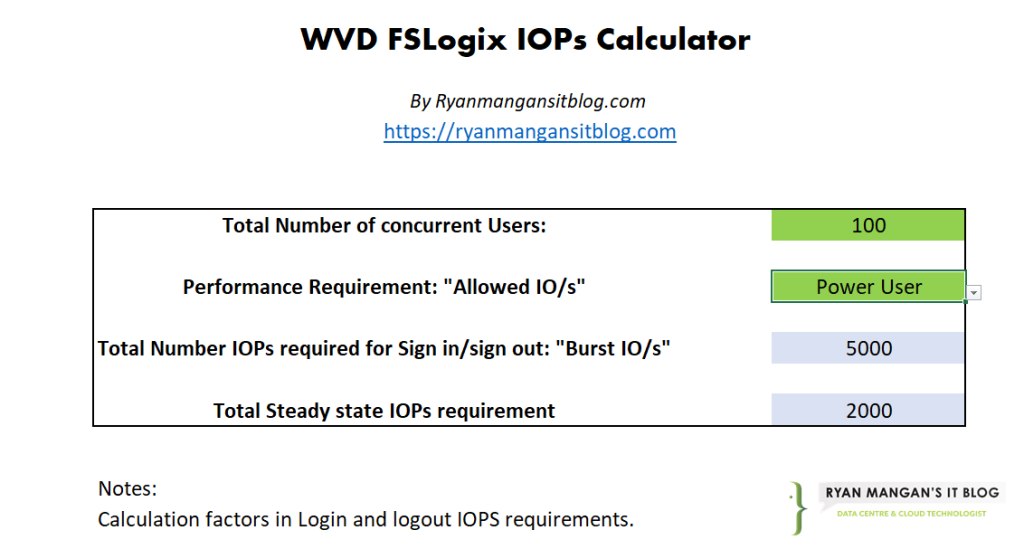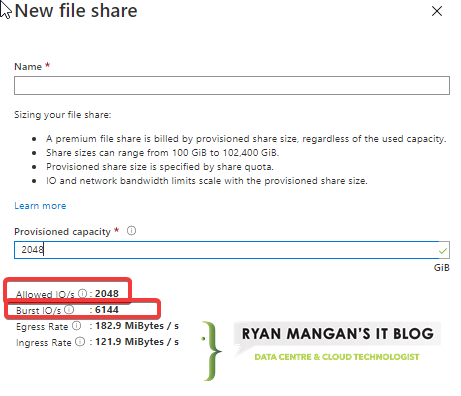September 11, 2020
Category: euc-enduser-computing, microsoft
Tags: fslogix, windows-virtual-desktop, wvd
Azure Files Sizing Calculator for Windows Virtual Desktop
Introduction
This is a short post to show you a simple tool I created that helps size a Azure file share for FSLogix.
You can access this calculator here: https://github.com/RMITBLOG/FSLogix
Essentially, you enter the number of users in the green box labelled "total Number of concurrent Users" and select one of the three options "Low, medium or Power User" from the "performance Requirement" drop down.
this will then output the required IOPs for Sign in and Sign out and the steady state IOPs for normal operations within a typical user session.
- Steady state IO/s = in session use of IOPs for user profiles
- Burstable IO/s = User Sign in/sign out IOPs for the user profiles.
Example
I have one WVD deployment of 100 users who have a high IO demand as the applications they use are quite thirsty.
I set the calculator to the concurrent user number of "100" users and select the performance requirement drop down to "Power user"

I then go to the azure files blade within Azure "storage accounts" and enter in the disk size to achieve the IOPs from the calculator as shown in the screenshot below.

You will note that 2TB is required to achieve the steady state IOPs on this example. Burstable will only offer performance for short term high IOPs activities like user sign in/sign out actions.
Summary
This tool has been created to assist with the appropriate sizing of FSLogix Profile containers and to help against the pitfalls of IOPs / user profile performance issues within a Windows Virtual Desktop.
Feedback welcome!!
You can access this calculator here: https://github.com/RMITBLOG/FSLogix
